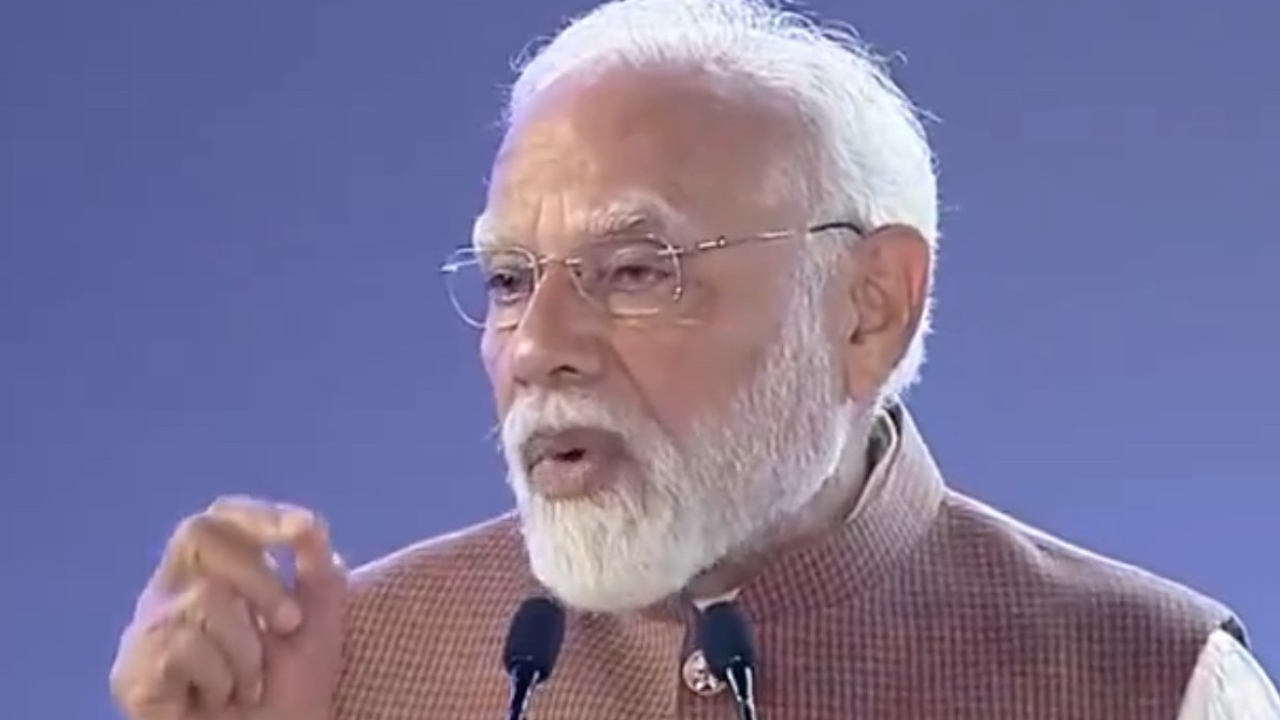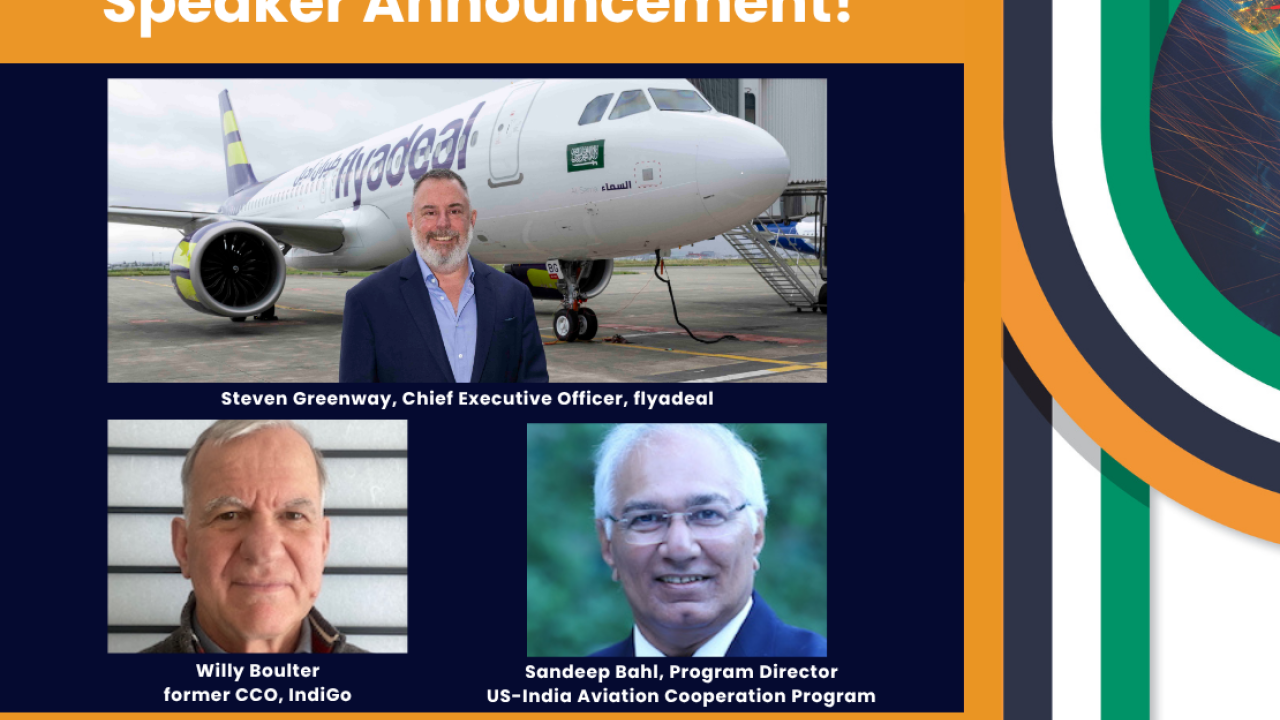Modi flags aviation potential of “sun-rising” India at IATA AGM
India is putting the rise of its blossoming aviation industry at the centre of its economic growth story; Prime Minister Narendra Modi told a packed room at IATA’s 81st Annual General Meeting in Delhi on 2 June.

Prime Minister Narendra Modi speaking at IATA’s AGM in Delhi (photo: IATA).
“Today's India is filled with greater self-confidence than ever before. We are not only a vast market in the global aviation ecosystem, but also a symbol of policy leadership, innovation, and inclusive development,” said Modi in a wide-ranging speech covering multiple aspects of India’s aviation ecosystem.
It was a major coup for an IATA annual gathering to be addressed by the leader of a major global economy, underlining the importance India places on the air transport sector as traveller numbers soar, airlines strive to make international strides with huge aircraft orders and new airports open at pace.
Modi stressed that “the aviation sector is poised to become a centre of major transformation and innovation in the times ahead. India is fully prepared for all these possibilities.
“I say this on the basis of three strong pillars that India possesses: Firstly, India has the market - and this market is not just a group of consumers; it reflects the aspirations of a dynamic and ambitious society of India.
“Secondly, we have the demography and talent for technology and innovation - our youth are the new-age innovators, who are driving breakthroughs in fields like artificial intelligence, robotics, and clean energy.
“Thirdly, we have an open and supportive policy ecosystem for industry. With the strength of these three capabilities, we must work together to take India’s aviation sector to new heights.
“In recent years, India has witnessed an unprecedented transformation in the field of civil aviation,” said Modi. “Today, India is the third-largest domestic aviation market in the world. The success of our UDAN (Ude Desh ka Aam Nagrik) scheme is a golden chapter in Indian civil aviation. Under this scheme, more than 15 million passengers have availed affordable air travel, and many citizens were able to fly for the very first time.
“Our airlines are consistently achieving double-digit growth. Together, Indian and foreign airlines operate flights for nearly 240 million passengers annually - more than the total population of most countries in the world. And by 2030, this number is expected to reach 500 million passengers.
“Today, 3.5 million metric tonnes of cargo are transported by air in India, and by the end of this decade, that figure is projected to rise to 10 million metric tonnes.”
Modi outlined the investment India is making in new airports. “These are not just numbers - they are a glimpse into the potential of a New India. And Bharat is working on a futuristic roadmap to fully maximise this potential.
“We are investing in world-class airport infrastructure,” explained Modi, with the country growing from 74 operational airports in 2014 to 162 today.
“Indian carriers have placed orders for over 2,000 new aircraft. And this is just the beginning,” he said. “India’s aviation sector is standing at a take-off point from where it is ready to soar to great heights. And this journey will not just cross geographical boundaries, but will also lead the world towards sustainability, green mobility, and equitable access.”
Modi noted that the country is “equally focused on safety, efficiency, and sustainability. We are moving towards sustainable aviation fuels, investing in green technologies, reducing our carbon footprint, and ensuring both progress and protection of the planet.”
He highlighted India’s Digi Yatra App, an example of digital innovation in aviation. Using facial verification technology, it provides a complete seamless travel solution from airport entry to the boarding gate eliminating the need to carry paper documents or show any ID.
“I believe innovations like these, born from India’s experience in delivering quality services to such a large population, can benefit many other countries as well. This is a secure and smart solution, and it can serve as a model and inspiration for the Global South,” said Modi.
“One of the major reasons behind the rapidly expanding aviation sector in India is our commitment to consistent reforms. We are taking every possible step to make India a global manufacturing hub. In this year’s budget, we have announced ‘Mission Manufacturing’.
“Earlier this year, we passed the Protection of Interest in Aircraft Objects Bill in the Indian Parliament. This has given legal force to the Cape Town Convention in India. As a result, a new opportunity has opened for global aircraft leasing companies to operate in India.
“Many of you are already aware of the incentives being provided in GIFT City (Gujarat International Finance Tec-City). These incentives have made India an attractive destination for aircraft leasing.
“The new Indian Aircraft Act is aligning our aviation laws with global best practices. This means India’s aviation laws are now simpler, the regulations are more business-friendly, and the tax structure is streamlined. Therefore, this is an excellent opportunity for the world’s leading aviation companies to invest in India.
“Growth in the aviation sector means new flights, new jobs, and new opportunities. The aviation sector is creating new avenues for pilots, crew members, engineers, and ground staff.
“Another sunrise sector is emerging – MRO. Our new MRO policies have accelerated efforts to make India a global hub for aircraft maintenance.
“In 2014, there were 96 MRO facilities in India. Today, that number has increased to 154. Reforms like 100% FDI 9Foreign Direct Investment) under the automatic route, GST (Goods & Services Tax) reduction, and tax rationalisation have given the MRO sector new momentum. Now, our target is to make India a $4 billion MRO hub by 2030.
“We want the world to see India not just as an aviation market, but as a value-chain leader. From design to delivery, India is becoming an integral part of the global aviation supply chain.
“Our direction is right, our speed is right, and that gives us the confidence to keep progressing rapidly. I urge all aviation companies: Along with Make in India, also focus on Design in India.
“One more strong pillar of India’s aviation sector is its inclusive model. Today, over 15% of pilots in India are women - this is three times the global average. Across the world, the average participation of women in cabin crew roles is around 70%, while India’s figure stands at 86%. The number of female engineers in India’s MRO sector is also surpassing the global average.
“We have always placed safety as the top priority in aviation. India has aligned its regulations with ICAO’s global standards. Recently, ICAO’s safety audit appreciated our efforts. The adoption of the Delhi Declaration at the Asia-Pacific Ministerial Conference is a testament to India’s strong commitment.”
Modi concluded with a nod towards market access. “India has always supported Open Skies and global connectivity. We uphold the principles of the Chicago Convention.
“Let us work together to create a future where air travel is accessible, affordable, and secure for everyone.”
Stay up to date
Subscribe to the free Times Aerospace newsletter and receive the latest content every week. We'll never share your email address.


